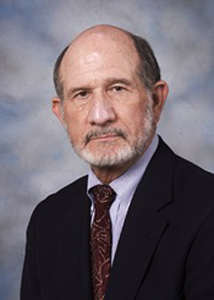Program Information
Point and Counter Point Debate: The More Important Heavy Charged Particle Radiotherapy of the Future Is More Likely to Be with Heavy Ions Rather Than Protons
A Smith1*, O Jaekel2*, (1) Houston, TX, (2) , Heidelberg Ion Beam Therapy Center, Heidelberg Germany
MO-E-500-1 Monday 3:00PM - 3:50PM Room: 500 BallroomOver the past decade there has been considerable interest and progress in the use of heavy ions such as protons and carbon in an attempt to improve the effectiveness of radiotherapy. Both have a physical advantage over photons because of their Bragg peaks, but only heavier ions such as carbon have a potential biological advantage. This has led to the claim that the most important heavy charged particle radiotherapy of the future is more likely to be with heavy ions rather than protons, and this is the premise argued in this debate.
Arguments FOR the Proposition include:
• relative to protons, heavier ions exhibit reduced lateral scattering, reduced range straggling, and increased dose to the tumor compared to the entrance dose
• accurate positioning of the Bragg peak can be verified by in vivo measurements with heavier ions but not with protons
• with heavier ions there is increased RBE in the tumor compared to normal tissues
• with heavier ions there is increased effectiveness in hypoxic tumors
Arguments AGAINST the Proposition include:
• proton facilities cost 2-3 times less than those for heavier ions
• cost and size of isocentric gantries for protons are much less
• there are large uncertainties in the RBE in the heavier ion Bragg peak
• with protons, there is the potential for reoxygenation during a course of therapy
• due to fragmentation, heavier ion beams exhibit a tail of high-LET radiation beyond the Bragg peak
Arguing for the Proposition is Oliver Jakel, Ph.D. Dr. Jakel completed his Ph.D. in Theoretical Physics at the University Erlangen, Germany in 1994. He then moved to the Department for Medical Physics, German Cancer Research Center (DKFZ), Heidelberg, where he is currently Full Professor and Director of the Heidelberg Ion Beam Therapy Facility of the University Hospital.
Arguing against the Proposition is Alfred R. Smith, Ph.D. Dr. Smith obtained his Ph.D. in Physics from Texas Tech University, Lubbock, TX, in 1970. After completing a Postdoctoral Fellowship in Medical Physics at The University of Texas, M. D. Anderson Hospital and Tumor Institute, he held faculty positions at several institutions until he moved back to M. D. Anderson in 2002 as a Full Professor and Director of Proton Therapy Development, a position he held until 2010.
Educational Objectives
1. To understand why heavy ions might be more suitable than photons for the treatment of some cancers
2. To understand the relative benefits of therapy with heavier ions compared with protons
3. To understand the relative benefits of therapy with protons compared with heavier ions
Contact Email:




